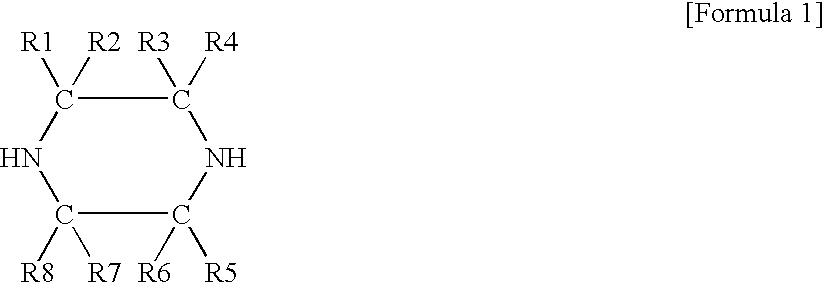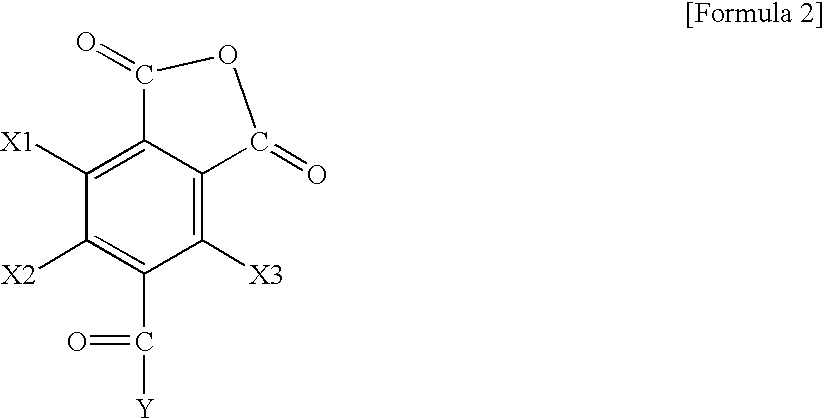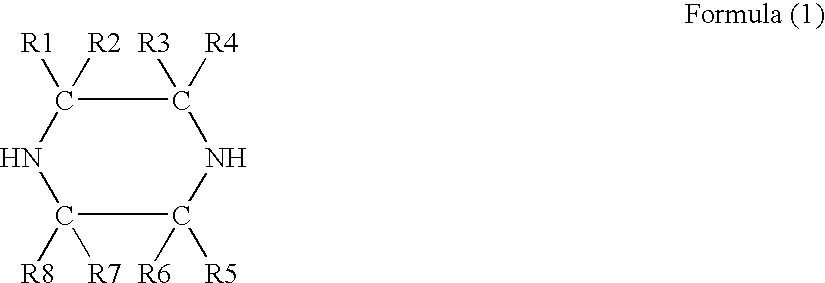Composite semipermeable membrane, processfor producing the same, and method of purifying water with the same
a semi-permeable membrane and membrane technology, applied in the direction of filtration separation, separation processes, coatings, etc., can solve the problems of lowering membrane performance, lowering membrane performance, and unable to achieve stable operation and enhanced water quality
- Summary
- Abstract
- Description
- Claims
- Application Information
AI Technical Summary
Problems solved by technology
Method used
Image
Examples
example 1
A composite semipermeable membrane was produced in the same way as in Comparative Example 1, except that the m-phenylenediamine / piperazine mole ratio in Comparative Example 1 was made 15 / 85, and there was added trimellitic anhydride chloride to the decane solution containing 0.06 wt % trimesoyl chloride until the trimesoyl chloride / trimellitic anhydride chloride mole ratio was 50 / 50.
When a reverse osmosis test was carried out on the composite semipermeable membrane thus obtained, under conditions of 0.3 MPa and 25.degree. C. using 2 ppm humic acid adjusted to pH 6.5 as the raw water, the water production capacity was 1.46 m.sup.3 / m.sup.2.d and the percentage humic acid removal was 99.80%. Furthermore, when a reverse osmosis test was carried out under the same conditions as for the humic acid using, as the raw water, an aqueous solution in which Na.sub.2 SiO.sub.3.9H.sub.2 O had been dissolved at a concentration corresponding to 30 ppm as SiO.sub.2, the percentage silica passage was...
examples 2 to 5
Composite semipermeable membranes were produced as in Example 1, with the m-phenylenediamine / piperazine mole ratio and the trimesoyl chloride / trimellitic anhydride chloride mole ratio set at those shown in Table 1. Evaluation was performed in the same way as in Comparative Example 1 using these composite semipermeable membranes and the evaluation results are shown in Table 1.
PUM
| Property | Measurement | Unit |
|---|---|---|
| pH | aaaaa | aaaaa |
| temperature | aaaaa | aaaaa |
| thickness | aaaaa | aaaaa |
Abstract
Description
Claims
Application Information
 Login to View More
Login to View More - R&D
- Intellectual Property
- Life Sciences
- Materials
- Tech Scout
- Unparalleled Data Quality
- Higher Quality Content
- 60% Fewer Hallucinations
Browse by: Latest US Patents, China's latest patents, Technical Efficacy Thesaurus, Application Domain, Technology Topic, Popular Technical Reports.
© 2025 PatSnap. All rights reserved.Legal|Privacy policy|Modern Slavery Act Transparency Statement|Sitemap|About US| Contact US: help@patsnap.com



